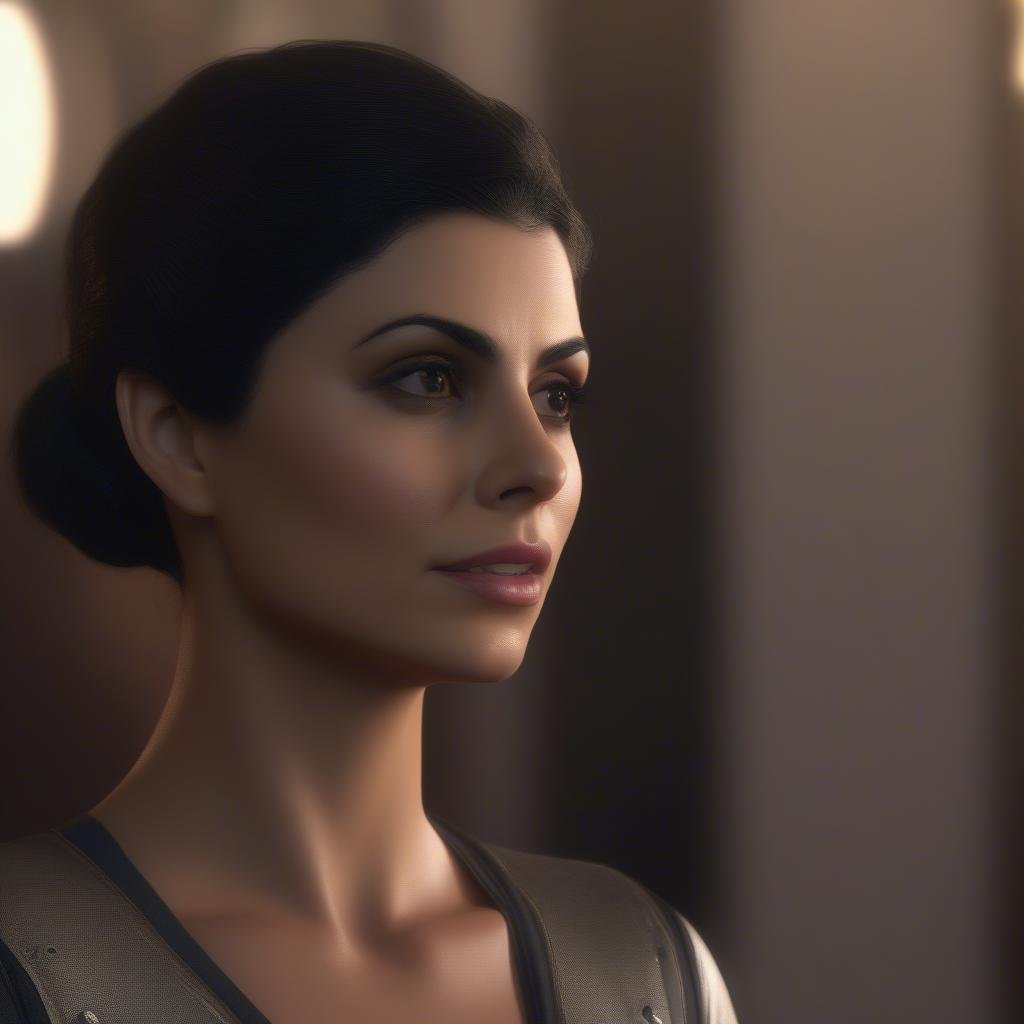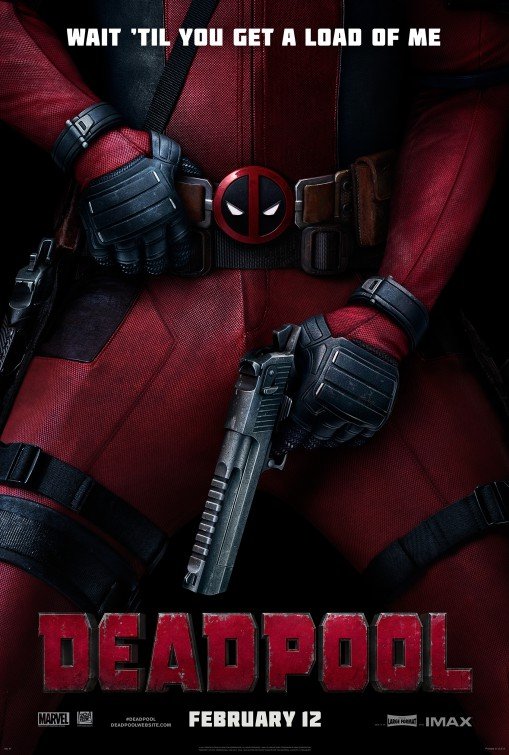Deadpool Movie Review 2016- A Game-Changer in the Superhero Landscape
Table of Contents
Released in 2016, Deadpool redefined the superhero genre by introducing a protagonist who is both hilarious and morally ambiguous. Directed by Tim Miller and featuring a career-defining performance by Ryan Reynolds, Deadpool shattered expectations with its R-rated content, meta-humor, and brutal action sequences. Unlike traditional superhero films that follow a hero’s journey, Deadpool is a bold departure that invites audiences into the chaotic mind of a character who is anything but heroic. This review will delve into the film’s intricate plot, character development, cinematic techniques, shooting locations, production details, and the profound impact it had on the industry.

Plot and Character Development
Deadpool tells the story of Wade Wilson, a former Special Forces operative turned mercenary, who is diagnosed with terminal cancer. Wade’s life takes a sharp turn when he meets Vanessa Carlysle, played by Morena Baccarin, a woman with a similarly dark sense of humor and a heart of gold. Their relationship is the emotional core of the film, grounding Wade’s transformation into Deadpool with genuine stakes.
After being subjected to a rogue experiment conducted by the sadistic Ajax (Ed Skrein), Wade gains accelerated healing powers but is left horribly disfigured. His skin is scarred, his appearance altered, and his mental state further skewed. The transformation into Deadpool is both physical and psychological, marking a departure from the man he once was. Wade’s quest for vengeance against Ajax is driven by a desire to reclaim his life and reconnect with Vanessa, but it’s his newfound sense of purpose that truly defines his journey.
Key Cast and Their Performances
Ryan Reynolds as Wade Wilson/Deadpool: Ryan Reynolds doesn’t just play Deadpool; he is Deadpool. His performance is a masterclass in embodying a character that is simultaneously irreverent, deeply damaged, and darkly humorous. Reynolds’ ability to deliver rapid-fire quips, break the fourth wall, and transition between comedy and drama with ease is what elevates the film. His commitment to the role, both physically and mentally, brings authenticity to the character that few actors could replicate. This role also served as a form of redemption for Reynolds, whose previous foray into the superhero genre with Green Lantern was met with critical disdain. In Deadpool, Reynolds finds his true calling, perfectly blending his comedic talent with the physicality required for an action star.

Morena Baccarin as Vanessa Carlysle: Vanessa is more than just a love interest; she’s Wade’s equal in many ways. Baccarin’s portrayal of Vanessa is nuanced, bringing warmth and depth to a character who could have easily been sidelined in favor of the more bombastic elements of the film. Her chemistry with Reynolds is undeniable, making their relationship one of the most believable and engaging aspects of the film. Vanessa’s unwavering support and love for Wade, even after his transformation, provide the emotional foundation that makes Deadpool’s journey meaningful.

Ed Skrein as Francis Freeman/Ajax: Skrein’s Ajax is a cold, calculating villain who is unflinching in his cruelty. While some critics argue that Ajax lacks the complexity of more nuanced villains, Skrein’s performance ensures that he is a memorable and menacing presence throughout the film. Ajax’s lack of empathy and sadistic enjoyment of Wade’s suffering make him the perfect foil for Deadpool’s chaotic and unpredictable nature.
T.J. Miller as Weasel: T.J. Miller brings his signature brand of deadpan humor to the role of Weasel, Wade’s closest friend and confidant. Weasel’s sarcastic commentary and dry wit provide a counterbalance to Deadpool’s more outrageous antics. While Miller’s role is primarily comedic, his character also serves as a grounding force for Wade, reminding him (and the audience) of the life he once had before becoming Deadpool.
Gina Carano as Angel Dust: Carano’s portrayal of Angel Dust, Ajax’s formidable enforcer, adds a layer of physical intensity to the film. As a mutant with enhanced strength, Angel Dust is a force to be reckoned with, and Carano’s background in mixed martial arts is evident in her performance. Her fight scenes are some of the most visceral in the film, showcasing a level of brutality that matches Deadpool’s own violent tendencies.
Brianna Hildebrand as Negasonic Teenage Warhead: Hildebrand’s Negasonic Teenage Warhead is a breath of fresh air in the superhero genre. Her character, a moody, punk-inspired teenager with explosive powers, provides a stark contrast to Deadpool’s over-the-top personality. The dynamic between the two characters adds a unique layer of humor and serves to highlight the generational differences within the superhero community.
Stefan Kapičić as the voice of Colossus: Colossus, a long-standing member of the X-Men, is the moral compass of the film. Kapičić’s voice performance, combined with the CGI rendering of the character, creates a strikingly noble and disciplined contrast to Deadpool’s anarchy. Colossus represents the traditional superhero ideals that Deadpool often mocks, but their interaction reveals a mutual respect and, ultimately, a begrudging friendship.

Direction and Cinematography
Tim Miller’s directorial debut with Deadpool is nothing short of remarkable. Miller’s experience in visual effects shines through in the film’s action sequences, which are both inventive and meticulously crafted. He successfully balances the film’s multiple tones—ranging from dark comedy to intense action to tender romance—without allowing any single element to overshadow the others. This balancing act is critical to the film’s success, as it ensures that the audience remains engaged and emotionally invested in Wade’s journey.
Cinematographer Ken Seng complements Miller’s vision with a gritty, yet stylized, visual approach. The use of color is particularly noteworthy; Deadpool’s red suit stands out against the often muted backgrounds, symbolizing his unique and rebellious nature. Seng’s work captures the raw energy of the action scenes, while also bringing a sense of intimacy to the film’s quieter moments, particularly in the scenes between Wade and Vanessa. The film’s visual style is both dynamic and cohesive, ensuring that the audience is constantly drawn into Deadpool’s world.
Shooting Locations
Deadpool was filmed primarily in Vancouver, British Columbia, Canada, a location that has become synonymous with major film and television productions due to its diverse landscapes and favorable tax incentives. Vancouver’s cityscape provided the perfect backdrop for Deadpool’s urban, gritty setting. The film’s most iconic action sequence, the freeway chase, was shot on the Georgia Viaduct, which was closed to traffic for several weeks to accommodate the production. This sequence is a masterclass in action filmmaking, combining practical effects, stunts, and CGI to create a scene that is both exhilarating and memorable.
Other notable locations include Riverview Hospital, which served as Ajax’s hideout and the site of Wade’s transformation into Deadpool. The hospital’s eerie, abandoned atmosphere added a layer of tension and horror to the film’s darker scenes. Vancouver’s weather, often overcast and rainy, also contributed to the film’s moody, atmospheric tone, reinforcing the sense of isolation and despair that Wade feels after his transformation.
Humor and Narrative Style
One of Deadpool’s most defining features is its humor. The film’s script, penned by Rhett Reese and Paul Wernick, is packed with quick-witted dialogue, meta-humor, and a plethora of references to pop culture and the superhero genre itself. Deadpool’s constant breaking of the fourth wall allows him to engage directly with the audience, offering commentary on the absurdity of the situations he finds himself in and the tropes of superhero films. This self-awareness is a double-edged sword; it keeps the audience entertained and involved but also challenges them to question the conventional storytelling methods of the genre.
The humor in Deadpool is often crude and irreverent, with an emphasis on adult content, including profanity, sexual innuendos, and graphic violence. This R-rated approach is a deliberate choice that sets Deadpool apart from other superhero films, which often aim for a broader, more family-friendly audience. By embracing its mature content, Deadpool is able to explore themes of trauma, revenge, and identity in a way that feels authentic and unfiltered.
However, beneath the layers of humor and violence lies a narrative with genuine emotional depth. Wade’s journey is not just about seeking revenge; it’s about coming to terms with his new identity and finding a way to reconnect with the woman he loves. The film’s exploration of self-acceptance, even in the face of extreme physical and emotional changes, adds a layer of poignancy that elevates it above a typical action-comedy.
Cost, Production Value, and Financial Success
Deadpool was produced on a relatively modest budget of $58 million, a fraction of what many blockbuster superhero films cost. Despite the financial constraints, the film does not feel cheap or underdeveloped. Instead, the budget limitations forced the filmmakers to focus on character-driven storytelling and practical effects, resulting in a film that feels fresh and grounded.
The special effects, while not as extensive as those in higher-budget films, are used effectively to enhance the narrative. The CGI work on characters like Colossus is impressive, and the practical effects, particularly in the film’s many fight scenes, add a visceral quality that heightens the impact of the action. The film’s financial success—grossing over $780 million worldwide—is a testament to the power of creative storytelling and smart budgeting. Deadpool became one of the highest-grossing R-rated films of all time, proving that there is a significant audience for superhero films that take risks and challenge conventions.
Cultural Impact and Legacy
Deadpool’s impact on the superhero genre and popular culture cannot be overstated. It demonstrated that audiences were hungry for something different—something that wasn’t afraid to push boundaries, challenge norms, and embrace its own absurdity. The film’s success paved the way for other R-rated superhero films, such as Logan (2017) and Joker (2019), which similarly found both critical and commercial success.
Beyond the film industry, Deadpool has become a cultural phenomenon. The character’s irreverent attitude, sharp wit, and moral ambiguity have resonated with a wide range of audiences, making Deadpool a fan-favorite not just within the Marvel Universe, but across all of pop culture. The film’s unique approach to storytelling, combined with its commercial success, has influenced how studios think about superhero films, encouraging more diverse and experimental narratives within the genre.
Conclusion
Deadpool is a film that dares to be different, and in doing so, it has redefined what a superhero movie can be. With a stellar performance by Ryan Reynolds, sharp direction by Tim Miller, and a script that balances humor with heart, Deadpool offers a cinematic experience that is both wildly entertaining and deeply satisfying. While its R-rated content may not be for everyone, those who appreciate a more adult-oriented take on superhero stories will find Deadpool to be a refreshing and groundbreaking film that continues to influence the genre years after its release.
